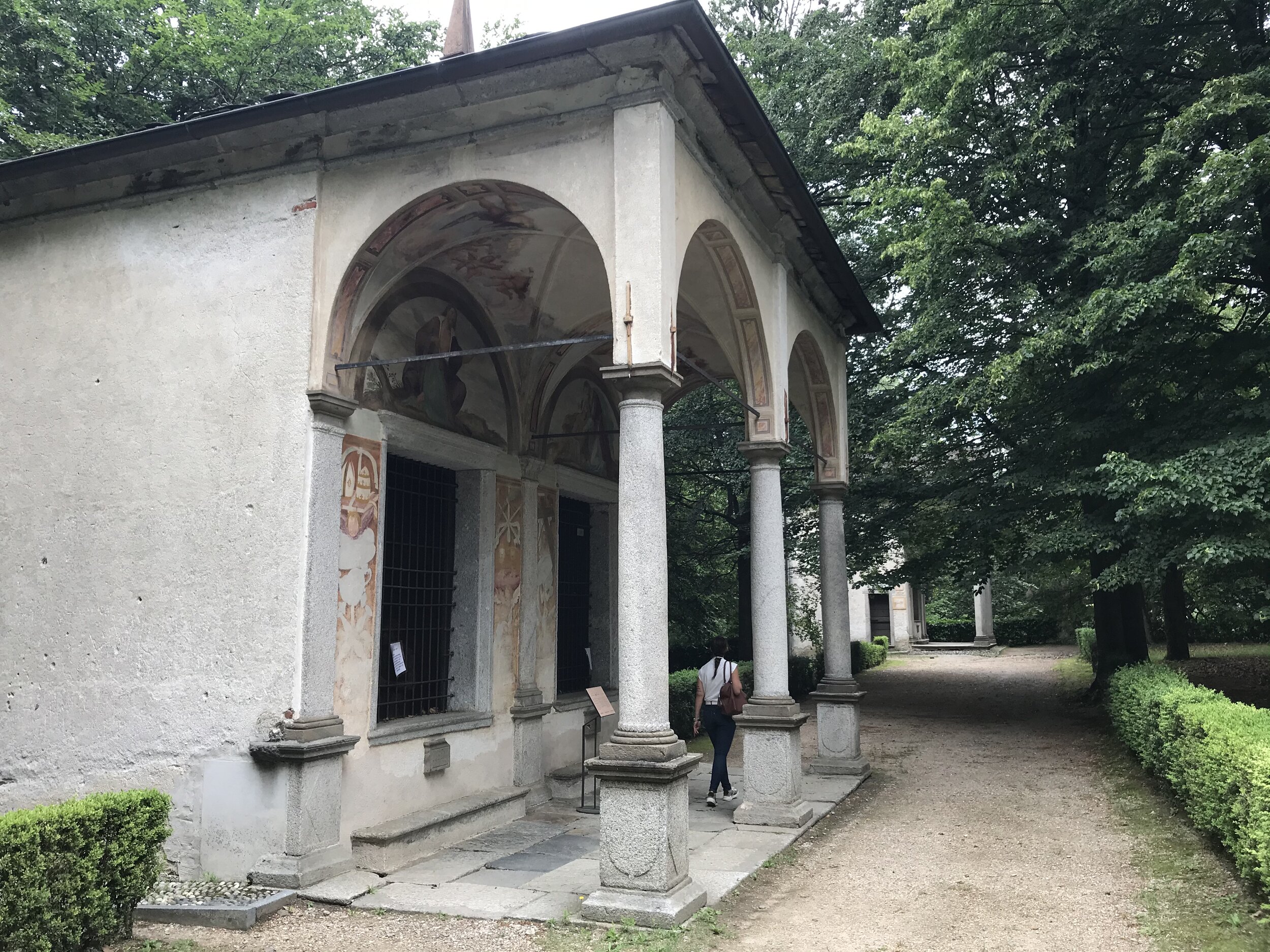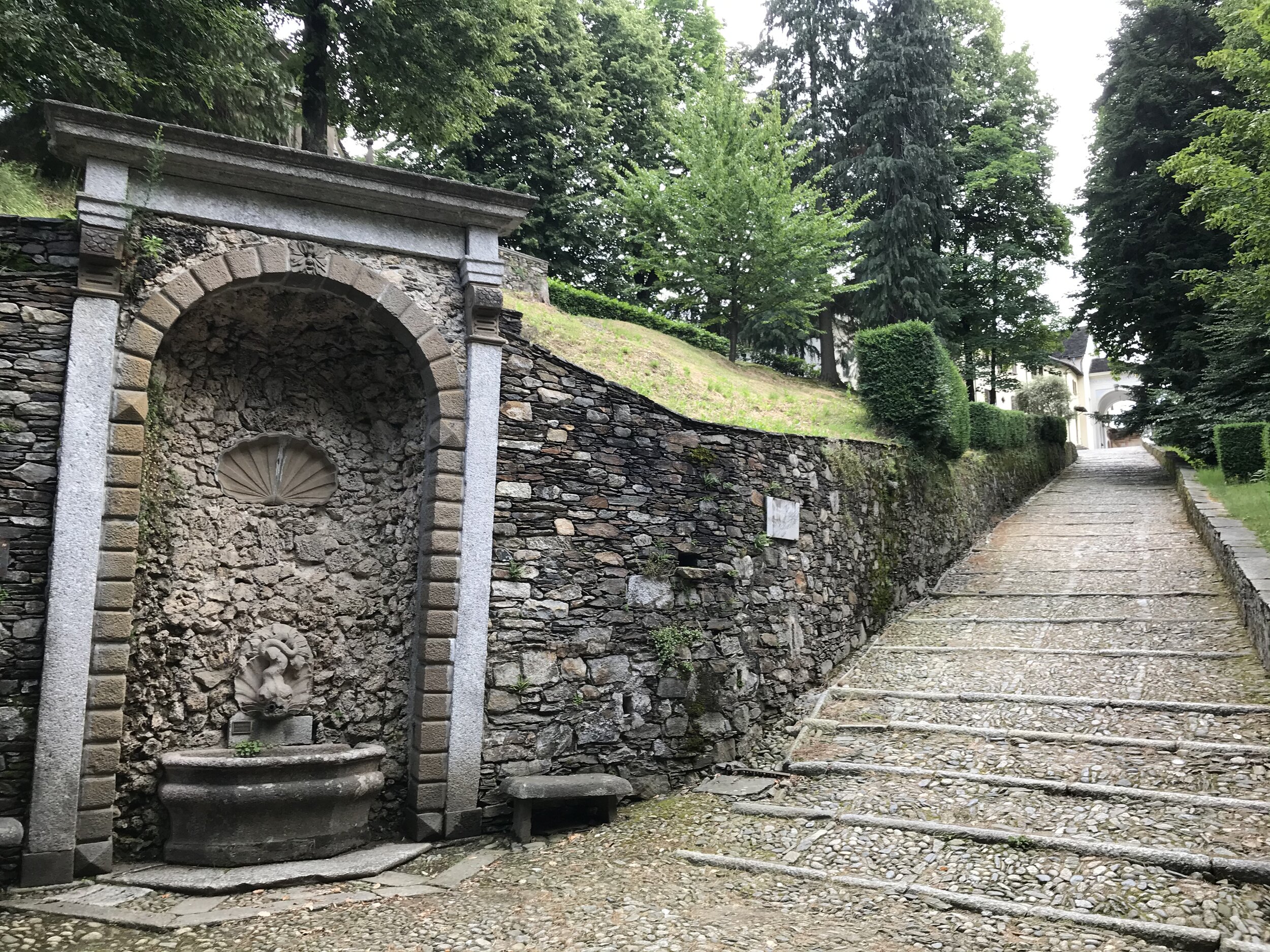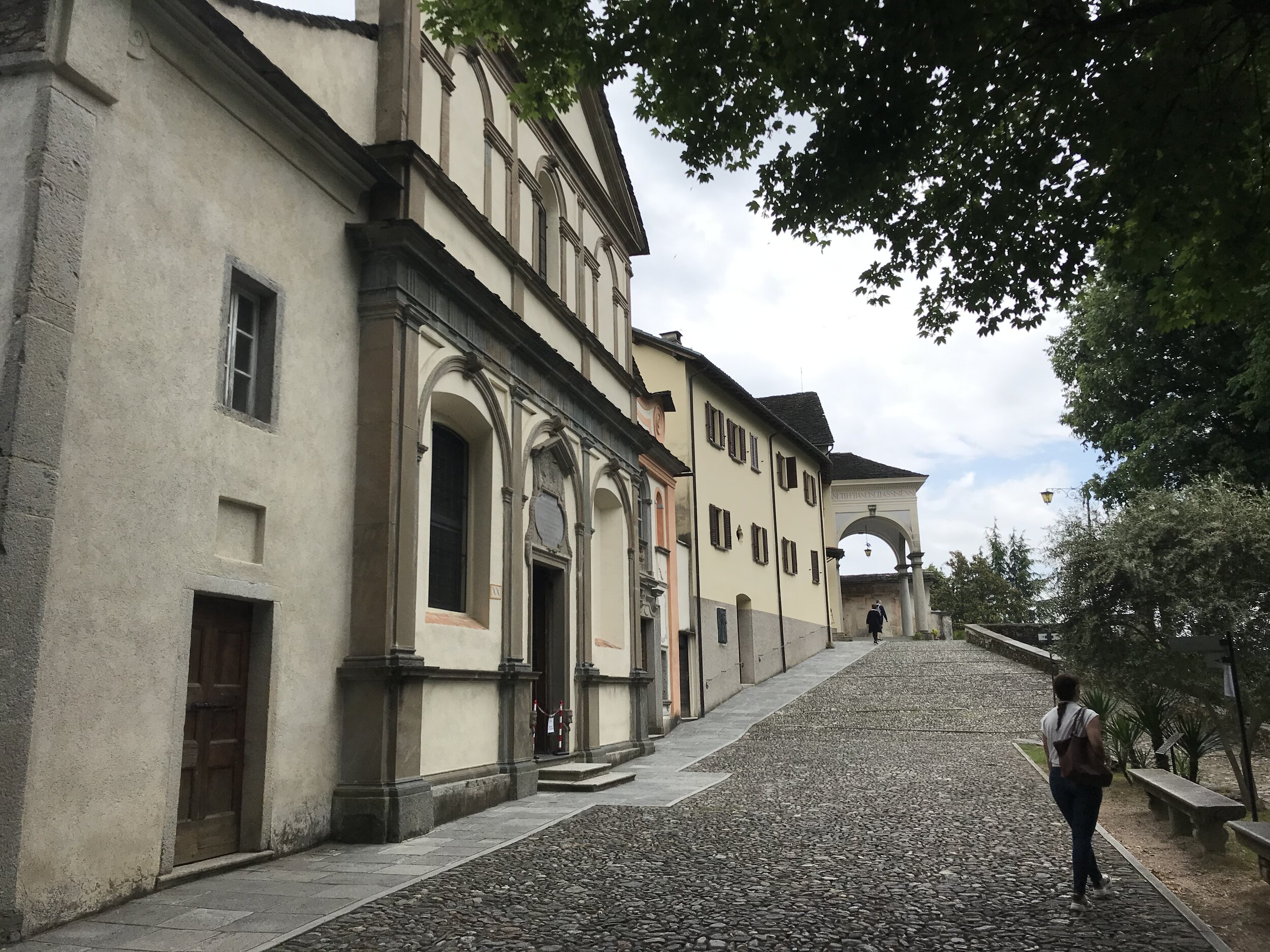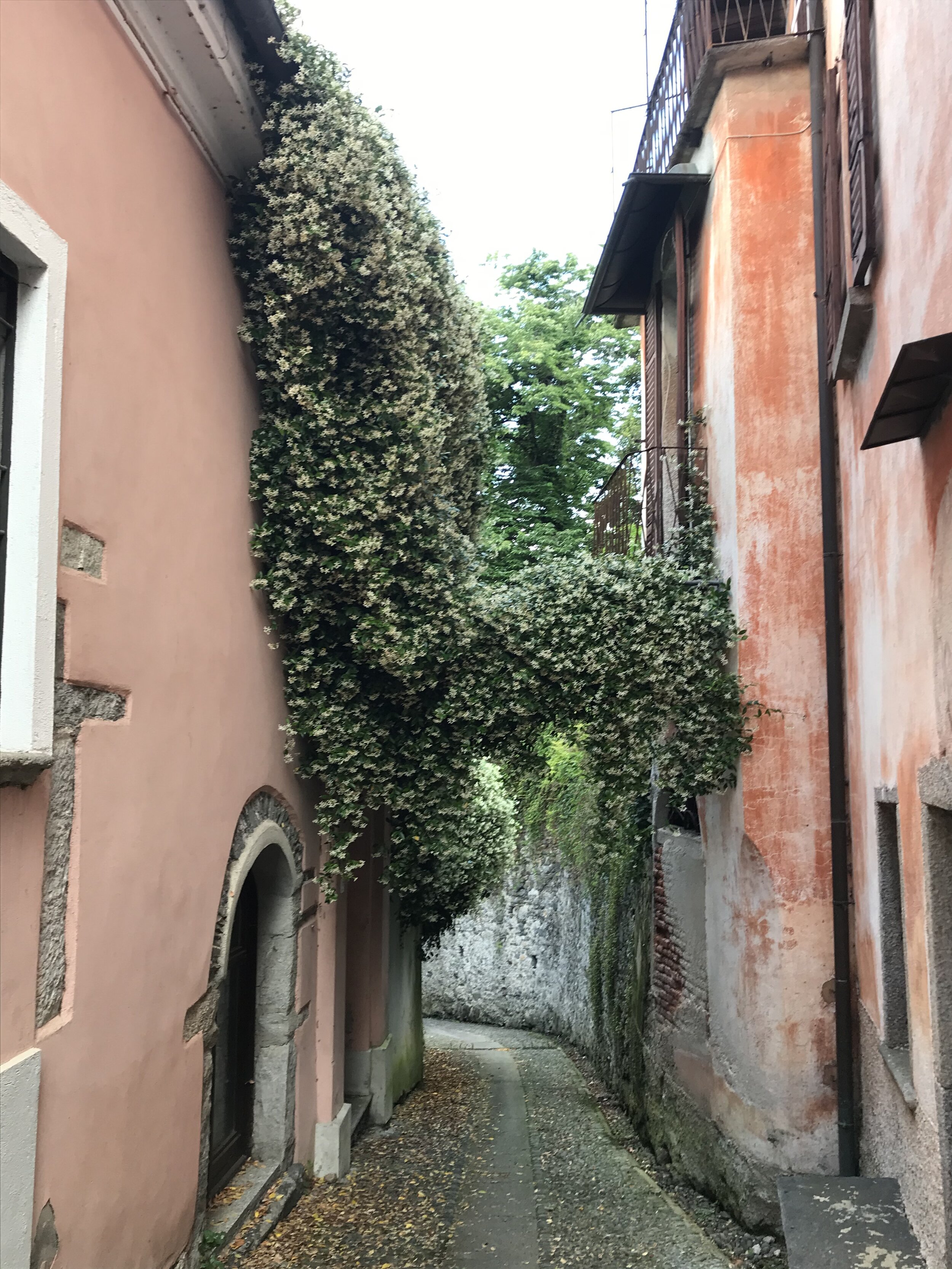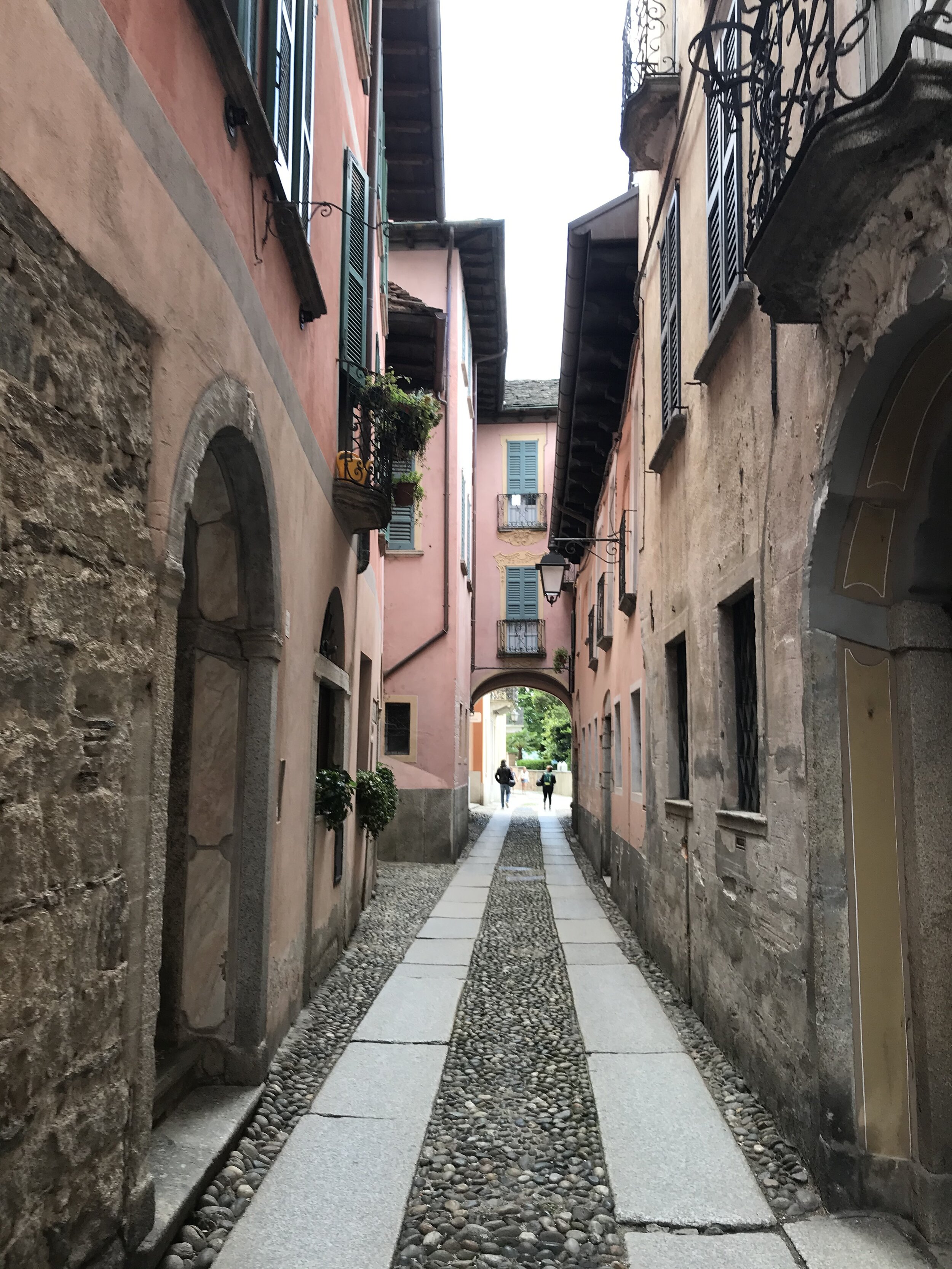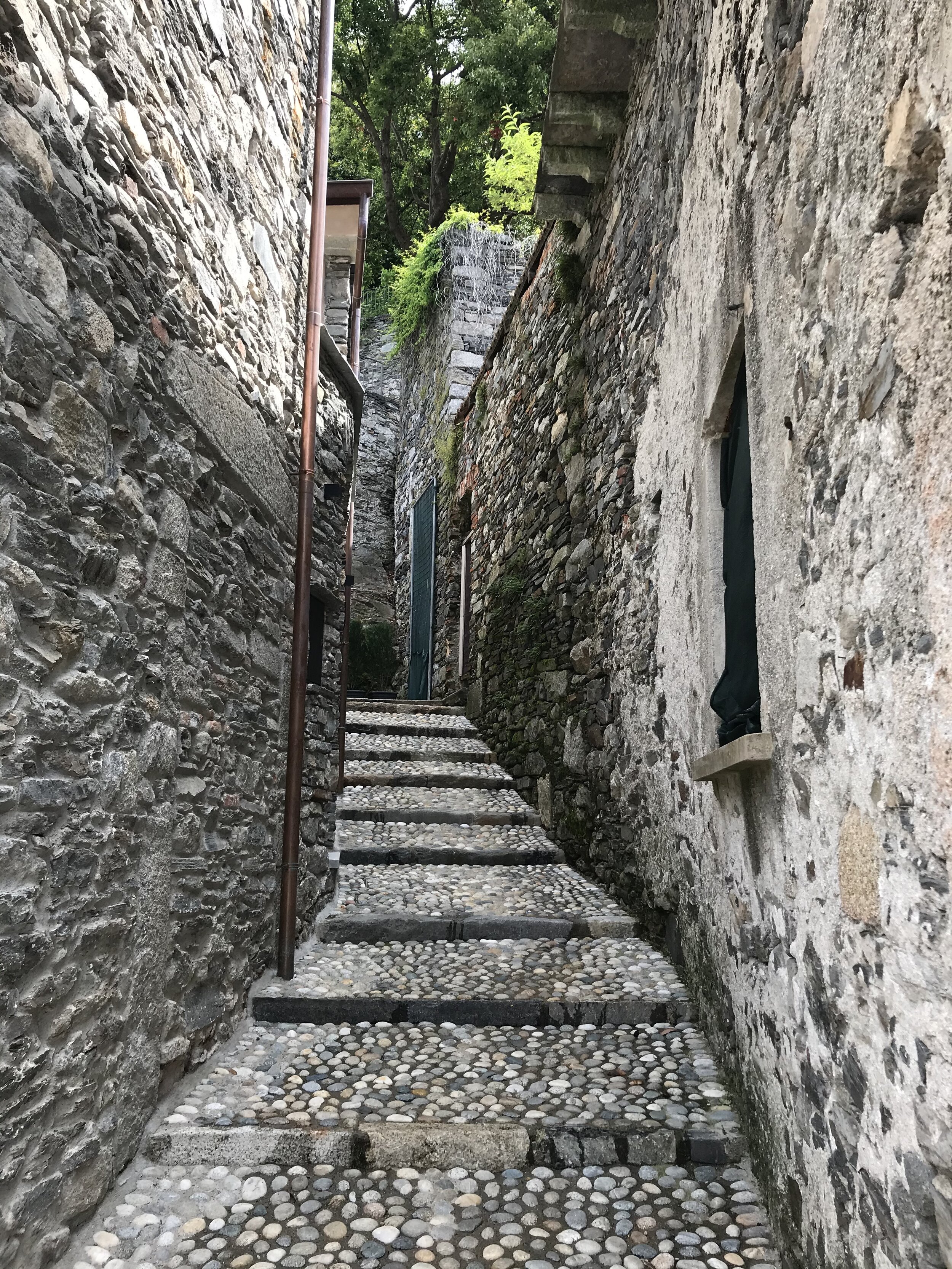Far from the protest and riot – ridden streets of Minneapolis, Minnesota another land famous for its lakes beckoned me over the weekend as COVID-19 measures in my new home of Northern Italy continued to subside. Lago di Como, Lago d’Orta, Lago Maggiore, Lago Varese, Lago di Comabbio – beautiful blue-grey waters studded with waterlilies and surrounded by quaint villages under the most charismatic skies I’ve ever walked under. This weekend in particular we went to Lago d’Orta, in the Piemonte region, known as the Piedmont in English. Here I got the first taste of a few things since I arrived in Italy – a 16th century village and what several locals have told me about the Piemonte region, chiefly its beauty, cuisine, solitude, and affordability. As I have written in these dispatches before, Northern Italy looks much like the forests and hills of the Mid-Atlantic or Midwestern United States. Here we are far from the dusty, sunny, rocky, herbaceous hills of the south, and the last 3 days of rain have made me feel like the realm I inhabit is somewhere north of Callais rather than bell’Italia.
Located about 40 kilometers west of my LKP, Lago d’Orta is a gorgeous rotund lake in the middle of which sits a small islet. The surrounding saddles and draws are carpeted with tall pines and hardwoods and the occasional villa. Three villages lay on its shores, including the village which takes from the lake its name, Orta. I will be releasing a more proper Northern Italy lake-crawl on World at Large later in the year when I have more material, but the small amount of the village I was able to enjoy left me dazed and dreaming of more. Orta is a very old town, with roofs of stacked dry-stone masonry and medieval cement walls. The main street can accommodate a single vehicle, and is enough to make a Smart Car feel like a Range Rover. A town of several beautiful churches, Orta is also home to Il Sacro Monte di Orta, a monastery of 22 chapels rested on a gorgeous forested peak behind the village, and is a World Heritage Site along with 8 other monastic settlements on the peaks of Lombardia e Piemonte. From the peak one can see the lake as if they were looking between the frames of an 18th century painting.
Travel in the time of COVID-19 is a lovely thing, and the secluded peaceful monastic complex actually felt like a sacred mountain rather than a busy destination for selfies and postcards. With young kittens at home though, we couldn’t stay for long and went down into the village for lunch after seeing the chapels. The town was as much like a fairytale world as you could imagine, and you just wonder how in the world it feels to actually live in a place like that. This is the same sense I got in Venice, Lucca, and Florence, but not so much in Rome and Varese, which seemed more like modern cities, or as strange as living in Georgetown D.C. or Carytown in Richmond, Virginia – that is to say the buildings are old, the layers of paint are thick as the walls of the Vatican, and I imagine the electricity, heating, and plumbing are a pain in the ass. Still these places might as well be museums – giant outdoor museums, and yet there are people who have lived in the center of Rome, the center of Florence, the island of Venice, for generation after generation. The question I always wonder is does it become normal? Can the human mind make normalcy of the center of Florence – of the center of Lucca – of the center of Napoli, of the center of Orta? For to the visitor they seem so extraordinary as to seem almost alien, or like a historic recreation. In the middle of Lago d’Orta there is a small island upon which sit beautiful buildings, the purpose and function of which I could not ascertain from the shoreline. Is living on the islet normal? How long can it take to become normal?
I might pick Orta above all the cities mentioned above, as the silence and peace of the forest, lake and the stones was rejuvenating. Also, it was nice to see that a coffee was still 1 euro, compared to Venice where everything cost 2-4x as much as in most parts of the country. In a gift shop, we found a hyper-gourmet coffee roasters, and bought coffee from Jinotega, Matagalpa, in Nicaragua – a plantation I’ve actually been to amazingly enough. When my fiance began to ask me whether I wanted a coffee or not in English instead of Italian, we got to embark on a situation I imagine will happen a lot from now on. The barman, in a ridiculously spiffy 17th century black jacket asked me “picolo vacanze? (small vacation?” to which I replied “No I live here (laugh). We’re getting married (laugh again)”. All for the best as far as I was concerned because neither he, nor anyone else in the village spoke English. When we left at quarter to 2, I was happy we resolved to visit again soon and travel to the islet. Maybe there I can ask someone if it’s just another place they call home.

